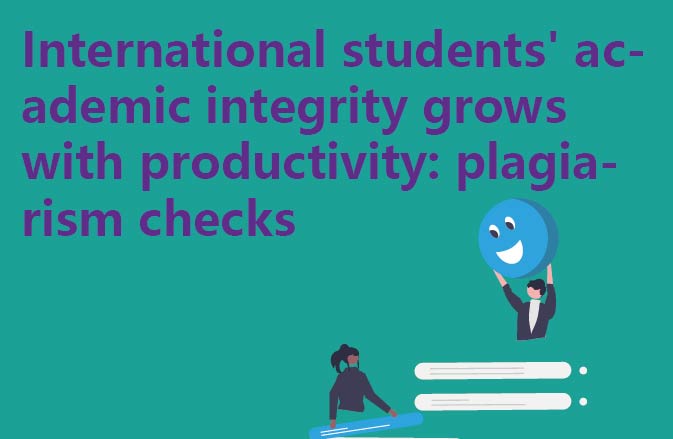I. Introduction
Since the beginning of the new era, universities have been playing an increasingly prominent role in leading the way in the pursuit of true knowledge. However, academic misconduct and systematic plagiarism still occur from time to time today, which has a negative impact on the academic community. This study aims to explore how to effectively curb such problems, improve the quality of dissertations, and take this as an opportunity to advocate an academic style in which science serves the society and independently explores the truth.
II. Structure of the prevention system
1. Establish a perfect review mechanism. Implement the checking as part of the regulations, and each school in each region can set up a special checking centre. In addition, recruit higher level experts to form academic appraisal teams to further strengthen the fight against academic misconduct.
2. Strengthen academic integrity education. Attaching importance to building a culture of academic integrity and setting up relevant courses, the main idea is to fundamentally shape students’ moral concepts. Specific practices include conducting lectures and symposiums. In addition, weight-checking systems like Turnitin and reference managers such as Mendeley, Wtire-N-Cite, Endnote, etc. can help to improve the efficiency of reviewing.
3. Guiding mentors to fulfil their responsibilities. Mentors are on high alert to supervise their students to avoid academic misconduct while nurturing talents with innovative thinking and independent research skills.
4. Quickly detecting and dealing with violations. The results of academic misconduct and penalties should be made public and transparent, making clear the serious consequences of plagiarism for the individual, the university and the academic community as a whole. This will help shape a fair, rigorous and orderly academic environment.
III. Suggestions for writing skills and norms
1. Review the sources in depth. Before starting to write, you should first conduct a comprehensive and detailed review to make sure that all the materials are from reliable sources and to ensure the originality of the content and the protection of intellectual property rights.
2. Conduct in-depth academic research. Through training and study, familiarise yourself with various research methods and apply them flexibly, so as to enhance your ability to conduct original research independently.
3. Familiarise yourself with citation rules. You need to understand the rules of citation between different disciplines to ensure that each citation meets professional standards.
4. express personal opinions in an original manner. Within the framework of internationally accepted academic standards, you will be able to vividly demonstrate your unique perspective and express your own research insights.
5. Make use of the necessary tools to assist in the preparation of your research plan, thus making the whole writing process easier and more efficient. For example, some specially designed tools can effectively reduce the number of tedious writing steps.
Case Study
A study by the Massachusetts Institute of Technology (MIT) in the United States is a successful example, MIT has taken a series of preventive measures, including the institutional level and the implementation of the level of preventive measures, and ultimately, the university’s academic reputation has been greatly enhanced, leading the innovation and transformation of scientific research results. Recently, China’s teaching facilities have made a qualitative leap, including the emerging intelligent classrooms and interactive virtual laboratories, which undoubtedly provide a better environment for academic research.
V. Conclusion
The close relationship between academic integrity and research productivity is an ongoing topic. We expect and encourage the teachers and students to make joint efforts to uphold the attitude of rigorous and realistic governance, the concept of academic integrity, and the commitment to shaping a fair, transparent, and orderly academic environment, in order to promote the prosperity and prosperity of China’s higher education.




